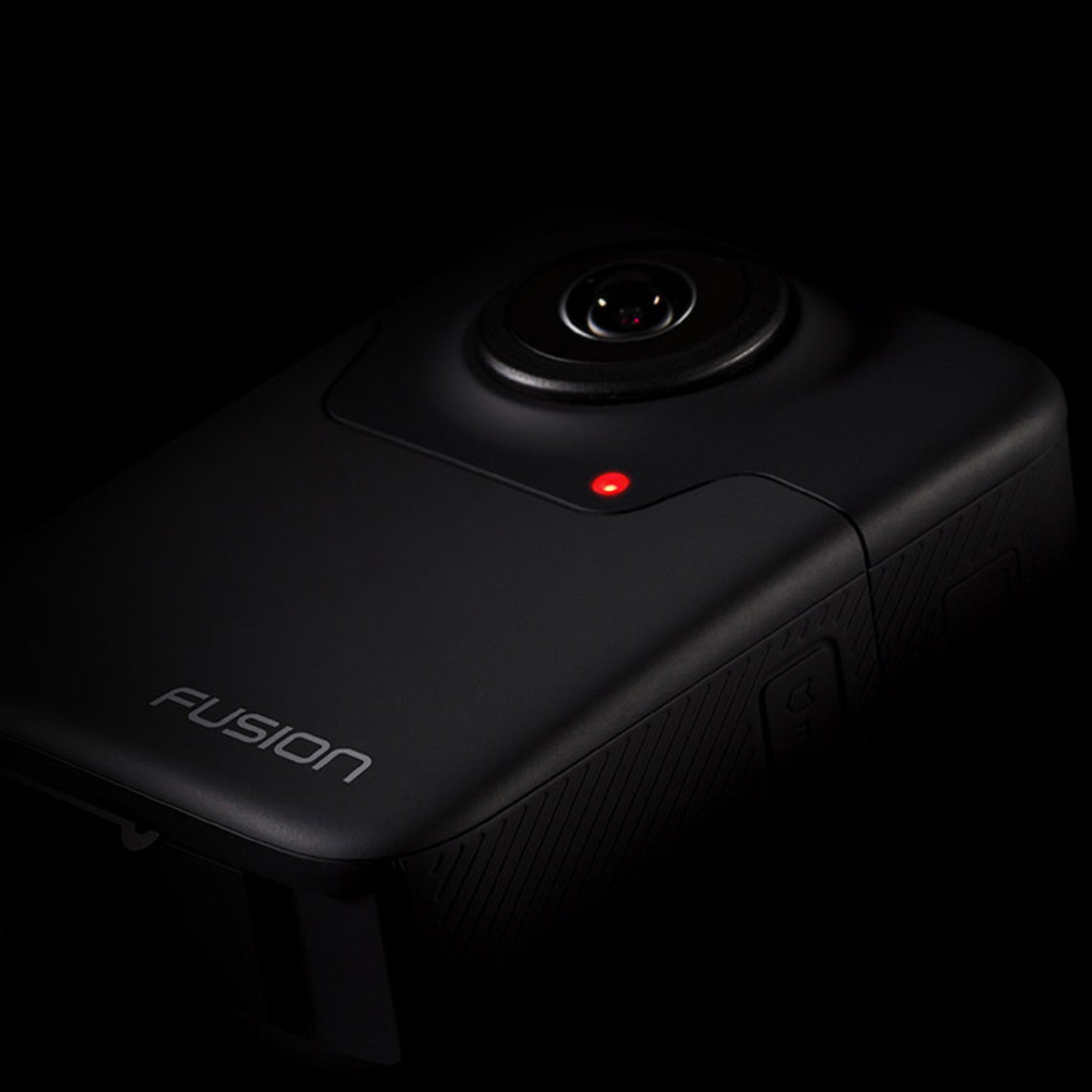GoPro has finally entered the 360-degree game. On Thursday��the the action camera company announced the , a camera that shoots video in a 360-degree sphere, enabling you to capture immersive VR shots, interactive stills, and traditional video. We have yet to play with the rig, but here’s what we know so far.��
The Fusion is capable of shooting 5.2K video at 30 frames per second, which means even when the video is stretched to a full sphere it will retain a lot of detail. Watching the YouTube video below while setting it to 4K (the current maximum quality for YouTube) looks very good. Close-up objects are nicely focused and things in the distance are clear, too, if not quite as sharp.
One of the biggest takeaways from the video:��there are very few “seams.” With most 360-degree cameras on the market, there are very obvious seams where footage from multiple lenses is blended together. It’s typically blurry in these spots, if not completely distorted. The seams on the Fusion’s video appear to be practically invisible.
Another thing to note is that the video comes close to being a full sphere. Some 360 cameras have a big black hole at the top or bottom of the image. The Fusion offers an almost complete globe. I say “almost” because you’ll notice you can’t see the mount that the camera is attached to. Mostly that’s a good thing, though if you look at the top��toward the end of the para-skiing clip, you can see where some sort of mount is half missing. But look at the first clip of the guy in the wingsuit: I can’t tell how the camera is mounted to him. It looks like it’s just magically floating in space. (Hopefully this happens��automatically and wasn't��just manually removed in postproduction.)
We can also see from the still images provided by GoPro that the camera itself is not a cube like the brand's Session camera.��It seems to have two lenses; one on each flat side and mounting hardware on the bottom. There’s also a mode button visible on the left. This is important��because in addition to spherical video and stills, GoPro has said that the Fusion will offer an OverCapture��mode that lets you shoot “conventional non-VR video and photos��in HD quality ‘punched out’ from the spherically��captured angles.”
Translation: You’ll be able to grab regular, nonspherical footage from the original capture. And you’ll be able to do cool things with that regular video. For example, imagine you’re mountain biking and want to get a shot��going around a steeply banked berm. With the Fusion, you could station the camera in the middle of the turn, ride through the turn,��and later create a full-HD shot that effectively follows��you as you curl around the corner. It will allow you to digitally tilt and pan the camera without having to actually pan the camera. ��
GoPro says it plans a “limited commercial release” by the end of 2017. We’re not sure what “limited” really means. The company also hasn't said how much the Fusion will cost,��whether you can use nonproprietary software with it, or if it will be waterproof (though��judging by the kayak footage in the video, I think that’s a good bet). I asked all these questions, but GoPro is being deliberately cagey. Even the three press images it��distributed barely show the hardware. But still, we're eager to get our��hands on one.
The Fusion will be competing against other 360-degree cameras from companies like Nikon, Samsung, Ricoh, 360Fly, and Insta360, though no one has run away the with the market yet. This presents GoPro with an opportunity to cash in on being the undisputed market leader in capturing action footage. By the time GoPro’s ill-fated Karma drone came out,��DJI had already run away with the consumer drone market. Here, GoPro has a real shot to eat everybody’s lunch—as long as the��product holds up to the hype.��
The only other note about availability was one��cryptic line of text:��“This summer,��GoPro will be��working closely��with��a��selection of pilot partners—including brands, agencies, and content professionals—to further refine the user experience and produce inspiring content that demonstrates the creative potential of Fusion.” If you’d like to be one of those pilot partners, you can .��


